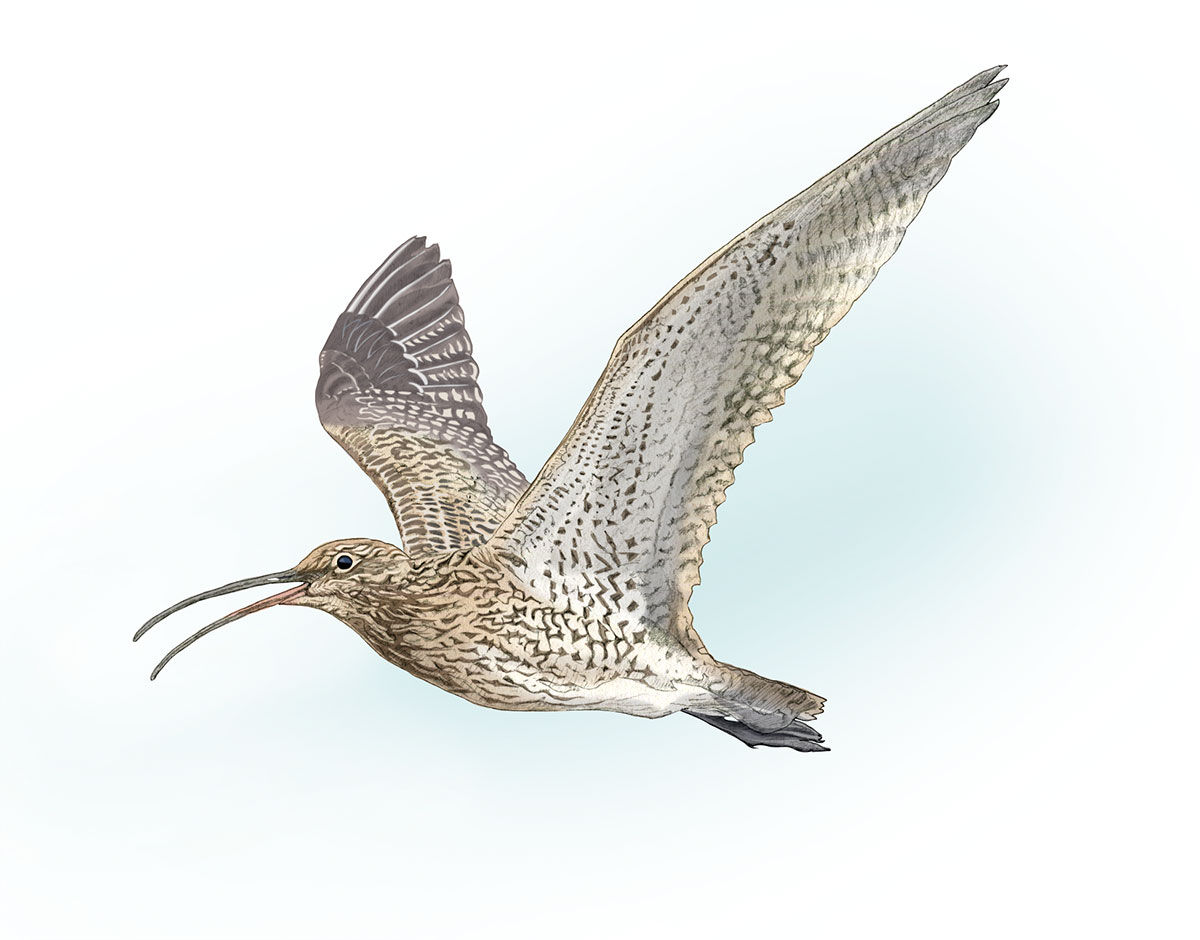
Numenius arquata
Sheltered coasts, estuaries, sand dunes, marshes, grassland, heaths and moors.
The curlew is a large, elegant, streaky-brown wading bird, with long grey legs to help keep its body dry as it paddles through water. Its most striking feature is its very long beak which curves downwards. It is the most common large wading bird found in Britain and measures 53 to 58cm in length. Its whistling ‘cur-lee’ call is one of the most familiar sounds across the moors during the summer.
During the winter months the curlew lives on sheltered coasts, estuaries and marshes, where it uses its long beak to poke down into soft mud to catch worms, molluscs and crabs (which it often swallows whole after removing the legs). In spring many curlew fly up to higher moorland areas to breed, and during spring and summer they are quite easy to spot. Whilst up on the heather moors, curlew mostly eat insects. They will often feed on rough grassland adjacent to the moor, which also provides earthworms. During the breeding season they make a large nest in a hollow on the ground and line it with grass. They become territorial and both the male and the female defend the territory. The female lays about 4 eggs between March and May. When the chicks hatch they are cared for by both parents for 5 to 6 weeks before they fly. Curlew take their chicks to wet, boggy places on the moors where there are plenty of insects to feed them.
The curlew population is listed as threatened, in part because of a lack of suitable habitats. It has been estimated that there could be around 35,000 curlew in Britain. In 2000 a moorland bird survey estimated there to be at least 1780 pairs of curlew breeding on moors in the National Park, while another survey in 2003 estimated that 474 pairs were breeding on farmland, giving a total of around 2250 pairs of curlew breeding in the Park.
The National Park Authority works with moorland managers and farmers to improve the moorland habitat for birds and other wildlife.
Like all ground-nesting birds on the moors, curlew chicks are easily disturbed by people and dogs. You can help by keeping your dog on a lead and avoiding getting too close to nest sites.